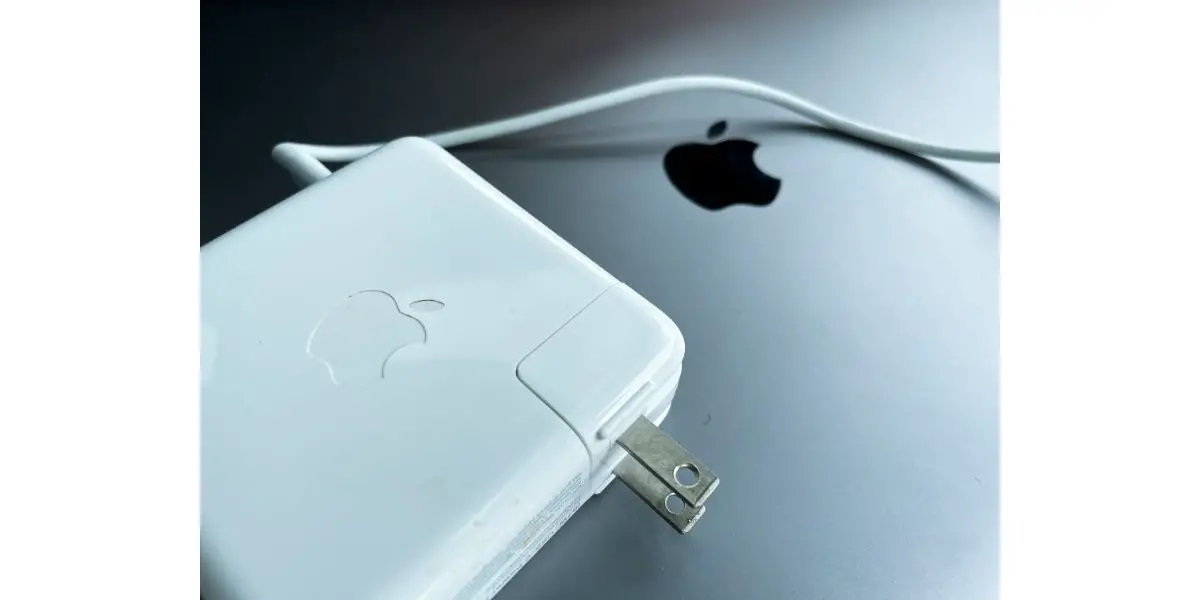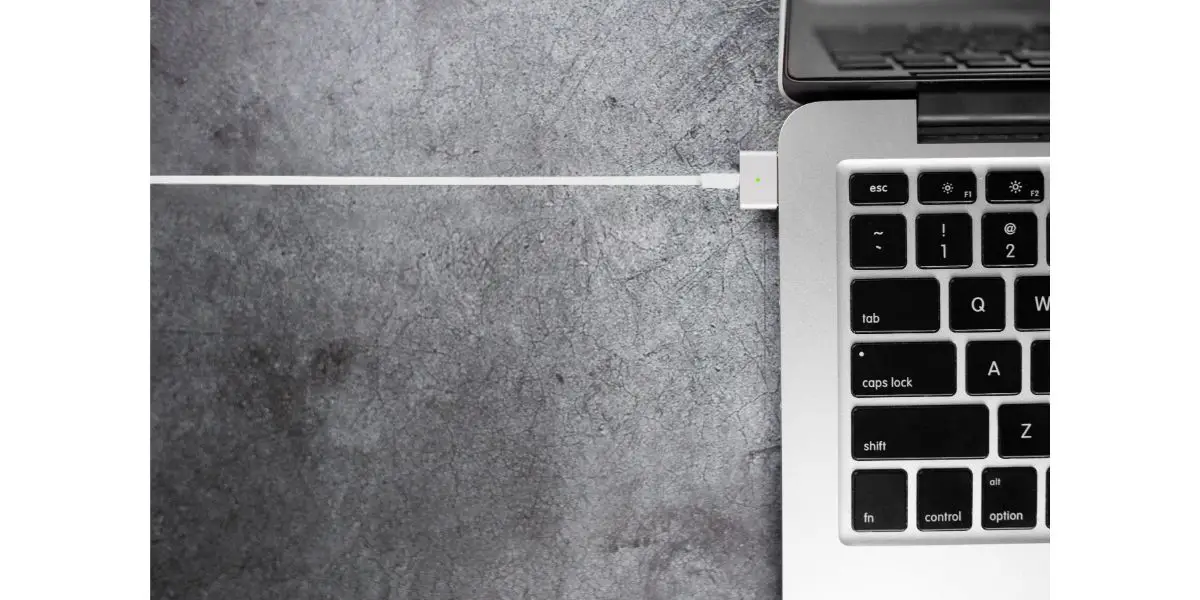Disclaimer: This post may contain affiliate links, meaning we get a small commission if you make a purchase through our links, at no cost to you. For more information, please visit our Disclaimer Page.
Apple is the brand behind the MacBook line, which includes some of the best laptops around. While you expect your Mac to feel a little hot when you use it, you probably don’t expect your charger to almost burn your skin. Now is a good time to see why your MacBook charger is so hot and the best way to keep it cool.
Table of Contents
Is it Normal for a MacBook Charger to Get Hot?
It’s normal for your MacBook charger to run hot. Nearly all laptop chargers from the top brands tend to run hot. The problem is that the charger can run so hot that it burns or scalds you. This is not normal. Your charger ensures that your computer has all of the power it needs.
When you leave it sitting around the house, the charger should feel cold to the touch. It will also stay cool when you just use it to charge your MacBook. As you start doing more things, the Mac needs to use more resources, which will cause the temperature of the charger to rise.
Why is My MacBook Charger So Hot? 8 Reasons
When you have a charger that gets too hot, you might feel nervous about using it because you worry it might burn your furniture or skin. Before you look at how to keep your charger from overheating, you should look at some common reasons why MacBook chargers run hot.
1. No Air Circulation
If you do not let enough air circulate around the charger, it can run hotter than it should. This includes placing it flat on the floor or on the blanket on your bed.
2. High Humidity
Humidity can wreak havoc on electronics that include both your MacBook and its charger. There’s a chance your charger gets hotter than it should because of the humidity level.
3. Faculty Cable
Whether you still use the original cable that came with your Mac or you bought a new one, there’s a risk that it’s faulty. A faulty cable can make the charger run hotter because it doesn’t have the right voltage.
4. Bad Charger
On the other hand, you might buy or use a bad charger. This often happens when you buy a charger from another company instead of Apple. Keep in mind that counterfeits are also available on some of the top websites.
5. Faulty Outlet
Don’t forget to check the outlet where you use the charger. There’s no guarantee that all the outlets in your homework the same way.
6. Bad Port
Your MacBook has a port where you plug in the charging cable. If this port is bad, it can change the amount of power that runs through the charger and increase its temperature.
7. Low Battery
MacBook chargers use more power to charge low or empty batteries. The charger will run hotter when you only charge your Mac when the battery is low.
8. Heat
Your charger can also run hot because the room where you use it is also hot. It can also run too hot because it sits in direct sunlight or near a vent.
How Do I Stop or Fix My MacBook Charger from Overheating?
It’s easier to fix a MacBook charger and keep it from overheating than you might think. You may want to try several different solutions to see which works best for your model.
1. Change How You Use the MacBook
Have you noticed that your MacBook runs too hot when you keep it sitting on your lap for hours or use it on your bed? The same thing can happen when you use the charger incorrectly. Never use your charger on any type of soft surface.
Always use caution if you use it around upholstery, too. Soft surfaces keep the air from circulating around the charger the way it should and will make it run hotter. Try to keep it on a surface that is both hard and flat such as a nearby table or shelf.
2. Use an Authorized Charger
Apple products are so expensive that no one would blame you for trying to save money with a third-party charger. Using an unauthorized product is risky, even if you only plan on using it for a few months until you save up for an official charger. When you buy from an authorized dealer, you also risk buying a counterfeit charger.
These chargers look like the real thing but do not have the safety features that Apple adds. They can also have the wrong voltage. While tons of chargers say they are compatible with MacBook models, they do not work as well as an official charger.
3. Maintain a Good Charge
Your charger uses different energy to charge your MacBook based on how much life is left in the battery. If you use your Mac in every room of your home or you use it for school and/or work, you probably drain the battery quite a bit.
When you plug in the charger, it must work harder to charge the battery and will feel hot. You may notice that the temperature drops as the battery charges. If you maintain a good charge, you can reduce some of the work of the charger and keep it from overheating.
4. Avoid Heat and Humidity
When it’s hot and humid in your living room or bedroom, you may want to just sit under the AC and try to beat the heat. While the heat and humidity can wreak havoc on your body, they can do just as much damage to your charger. Keep the charger as cool and dry as possible for as long as possible.
Never cover the charger with anything and ensure it has proper ventilation. You also want to move it away from any heat sources such as a vent or portable heater. Do not place your charger near windows with direct sunlight either.
5. Change the Outlet
Faulty outlets are one of the leading causes of home fires. When there are any electrical problems inside your walls, you might detect a smoky odor or notice soot marks around the outlet. Some outlets have problems and do not exhibit any symptoms though.
If your charger keeps running hot, unplug it and try using it in a different outlet. You may find that some of the outlets in your home work better with your charger than others do. Try the same thing if you use a surge protector.
6. Check for Damage
Any damage to your MacBook charger can cause problems and make it produce a lot of heat. Unplug the charger and check all of the parts as well as the cable. You want to look for bare wires in the cable and any swelling that indicates a problem with the wires inside.
Make sure you check the adapter itself, too. You might find that one or more of the pins are bent or that the adapter has a damaged case. If you have a different charger, you can plug it in and see if that fixes the overheating issue.
7. Replace the Charger
Though you may not want to admit it, there will come a time when you need to replace your charger. While Apple has a great reputation for some of its products, many of its chargers do not last as long as its products do. When you buy a new charger, stick to authorized models from Apple.
Make sure that the new charger matches the needs of your Mac. Check out your warranty details if you recently bought a new charger or a MacBook. There’s a good chance that your warranty will cover one that keeps overheating or running too hot.
While you may need to have a tech look at the charger and try to fix it when you file a warranty claim, you may have the chance to skip this step.
Conclusion
A MacBook with an overheating charger is a fire hazard that can cause serious damage to your body and home. While your charger will likely feel warm, it should not feel so hot that it can burn you. Use these solutions to keep your MacBook charger from overheating.


